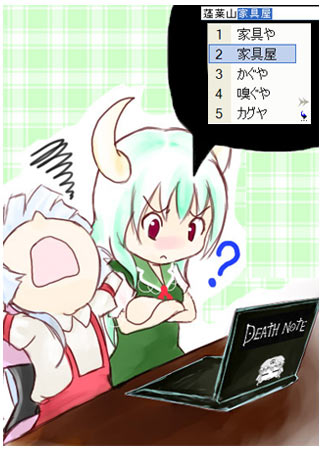Back in the early days of my fascination with Japan, I used to wonder how computers and word processors could possibly work in Japanese, and I imagined a giant keyboard with 1,000 keys on it. Happily, Japanese text entry is a lot simpler than that, thanks to front-end input systems in modern computer and phone operating systems. To enter a phrase like ogenki desu ka? (“how are you today?”) in kanji, you’d change to the Japanese input system and enter the phrase in romaji, that is the Roman alphabet on your keyboard. (Back in the 80s and before, there was a kana keyboard layout, which is why there are still USB keyboards with kana characters printed on the keys now.) After entering the text you want, hit the henkan (“transform”) key, which is the space bar, and the kanji input software will try to guess which kanji or mix of kanji and kana you want — though sometimes a subtle dance ensues between the user and the software to find the correct kanji. If you’re not careful, you might make a henkan misu, when the input software guesses your kanji wrong, with you entering “I’m pretty tired” (だいぶつかれた, which should change to 大分疲れた) but ending up with “the Great Buddha statue has withered” (大仏枯れた). Inputting Japanese with the romaji alphabet takes some getting used to, too — for example, to enter “Disneyland” in katakana (ディズニーランド)you have to type “dexizuni-rando” — and for this reason, many people find our Hiragana Mouse Pad a useful thing to have on their desk.

Keine has trouble finding Kaguya’s correct kanji, so she can’t access the Death Note website














